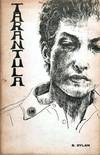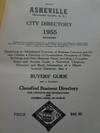
De viribus electricitatis in motu musculari commentarius cum Joannis Aldini dissertatione et notis. Accesserunt epistolae ad animalis electricitatis theoriam pertinentes
by GALVANI, Luigi
- Used
- Very Good
- Hardcover
- first
- Condition
- Very Good
- Seller
-
Ritterhude, Germany
Payment Methods Accepted
About This Item
RARE FIRST EDITION IN BOOK FORM. Galvani first published his theory in 1791 in volume V of the Proceedings of the Bologna Academy of Science. He believed that "animals possess in their nerves and muscles a subtle fluid quite analogous to ordinary electricity" (DSB). The offprint of his 1791 article, the first separate edition of the work, is known in only a dozen copies. Galvani's nephew, Aldini, became his uncle's most ardent supporter, and published this edition - the first in book form - the following year with his extended notes and commentary. At the end appears an exchange of letters between Don Bassano Carminati and Galvani, containing Carminati's report of Volta's repetition of Galvani's experiments, which Volta interpreted correctly as the result of contact electricity.
"By the end of the eighteenth century the connexion between nervous action and electricity had been the subject of investigation for some time. Newton, when discussing the properties of aether, had made suggestions that an electric spirit might convey sensations to the brain along the nerves and produce muscular reactions: see Book m of Opticks and the General Scholium concluding the second edition of the Principia. Haller also made experiments trying to prove a connexion between electrical action and reflexes of the muscles. It was left to Luigi Galvani, professor of anatomy at Bologna, in On the Effects of Electricity on Muscular Motion, to provide, as he thought, dramatic experi¬ments on what was called 'animal electricity' and after¬wards 'galvanism'. Galvani observed in his laboratory that when a nerve in a frog's leg was touched with a scalpel, violent contractions of the muscles occurred simultaneous with the sparks discharged from a nearby electrical machine. He further discovered that when one metal was placed in contact with a frog's nerve, another with a muscle, and the metals touched, contraction of the muscle took place, without needing a spark from an electrical machine. As a physiologist, Galvani thought that this action was due to the presence of electricity in the animal itself, as in the 'electric eel', and that the metal wires simply served as conductors. He did not realize that he had not discovered just a new physiological source of electricity, but a new source of continuous electric flow in chemical action. Hitherto electricity had been produced only in high-voltage, intermittent surges from frictional machines. It was Alessandro Volta, a physicist, who proved that animals were inessential to 'galvanic' electricity, and who constructed the first battery to cause a current to flow by chemical action. Galvani's paper immediately aroused great interest in the scientific world, and it involved him in controversy with Volta (largely carried on by Galvani's nephew, Giovanni Aldini, on his uncle's behalf). Galvani's influence on the modem development of energy, electrochemistry and electromagnetism is an indirect one. But there is no doubt that modern electro¬physiology, as was emphasized by one of its foremost representatives, Du Bois-Reymond in Germany, derives from those observations of the behaviour of the frog's legs" (PMM 240).
"In his experiments on the irritable responses provoked by static electricity in prepared frogs, Galvani inadvertently discovered the central phenomenon of galvanism: the production of electric current from the contact of two different metals in a moist environment" (Norman).
References: Norman 869; PMM, Printing and the Mind of Man, 240 (journal issue); Dibner 59 (Journal issue); Fulton and Stanton, A bibliography of Galvani's Writings on Animal Electricity, 5; Osler 1243; Waller 11346; Wellcome III, p. 86; Wheeler Gift 575; DSB V, pp. 267-69.
Reviews
(Log in or Create an Account first!)
Details
- Bookseller
- Milestones of Science Books
(DE)
- Bookseller's Inventory #
- 003732
- Title
- De viribus electricitatis in motu musculari commentarius cum Joannis Aldini dissertatione et notis. Accesserunt epistolae ad animalis electricitatis theoriam pertinentes
- Author
- GALVANI, Luigi
- Format/Binding
- Hardcover
- Book Condition
- Used - Very Good
- Quantity Available
- 1
- Edition
- 1st Edition
- Publisher
- Societatem Typographicam
- Place of Publication
- Modena
- Date Published
- 1792
- Keywords
- Physics, animal electricity, muscular motion, frogs
- Bookseller catalogs
- Physics; PMM - Printing and the Mind of Man; Dibner - Heralds of Science;
Terms of Sale
Milestones of Science Books
Prices include VAT for shipments within Germany or to consumers inside the EU. Shipping costs depend on shipping destination and are added on the price.
**Imprint:**
Terms according to German law § 5 TMG:
Jörn Koblitz
Milestones of Science Books
Schulstrasse 18A
D-27721 Ritterhude
Contact:
Phone: +49 (0)421 1754235
E-Mail: info@milestone-books.de
**VAT-ID**
VAT-Identification number according to German law §27a Umsatzsteuergesetz:
DE272372101
Person, responsible for the content on this web site according to § 55 Abs. 2 RStV (German act):
Jörn Koblitz
Schulstrasse 18A
27721 Ritterhude, Germany
**Online Dispute Resolution (ODR):**
Online dispute resolution according to Article 14(1) ODR-VO: The European Commission provides a platform for settling oline disputes. It is accessible under: http://ec.europa.eu/consumers/odr/
Source: created by imprint-Generator of: http://www.e-recht24.de
About the Seller
Milestones of Science Books
About Milestones of Science Books
Glossary
Some terminology that may be used in this description includes:
- New
- A new book is a book previously not circulated to a buyer. Although a new book is typically free of any faults or defects, "new"...
- Crisp
- A term often used to indicate a book's new-like condition. Indicates that the hinges are not loosened. A book described as crisp...
- Fine
- A book in fine condition exhibits no flaws. A fine condition book closely approaches As New condition, but may lack the...
- First Edition
- In book collecting, the first edition is the earliest published form of a book. A book may have more than one first edition in...
- Offprint
- A copy of an article or reference material that once appeared in a larger publication.
- Plate
- Full page illustration or photograph. Plates are printed separately from the text of the book, and bound in at production. I.e.,...
- First State
- used in book collecting to refer to a book from the earliest run of a first edition, generally distinguished by a change in some...
- Chipping
- A defect in which small pieces are missing from the edges; fraying or small pieces of paper missing the edge of a paperback, or...







